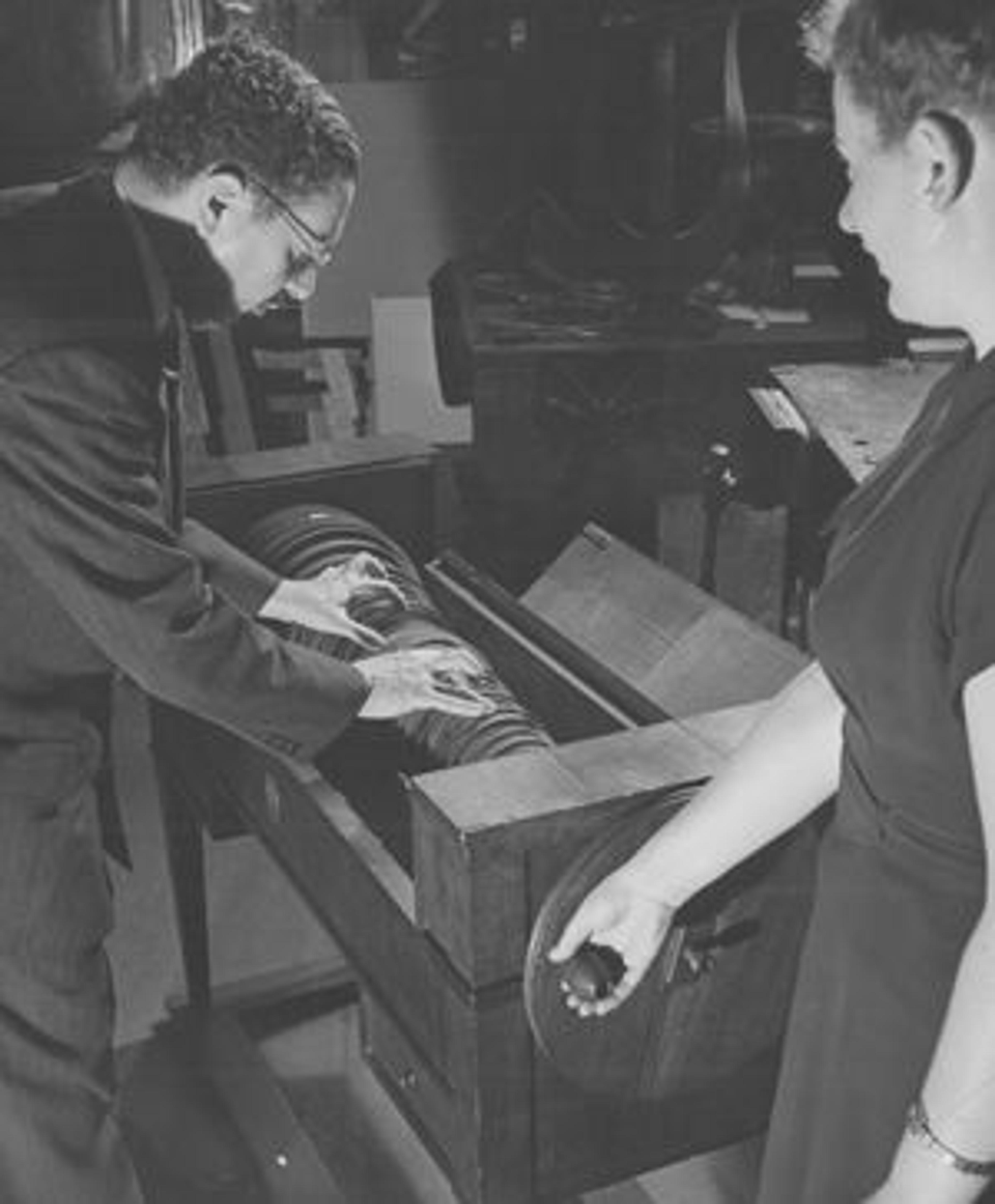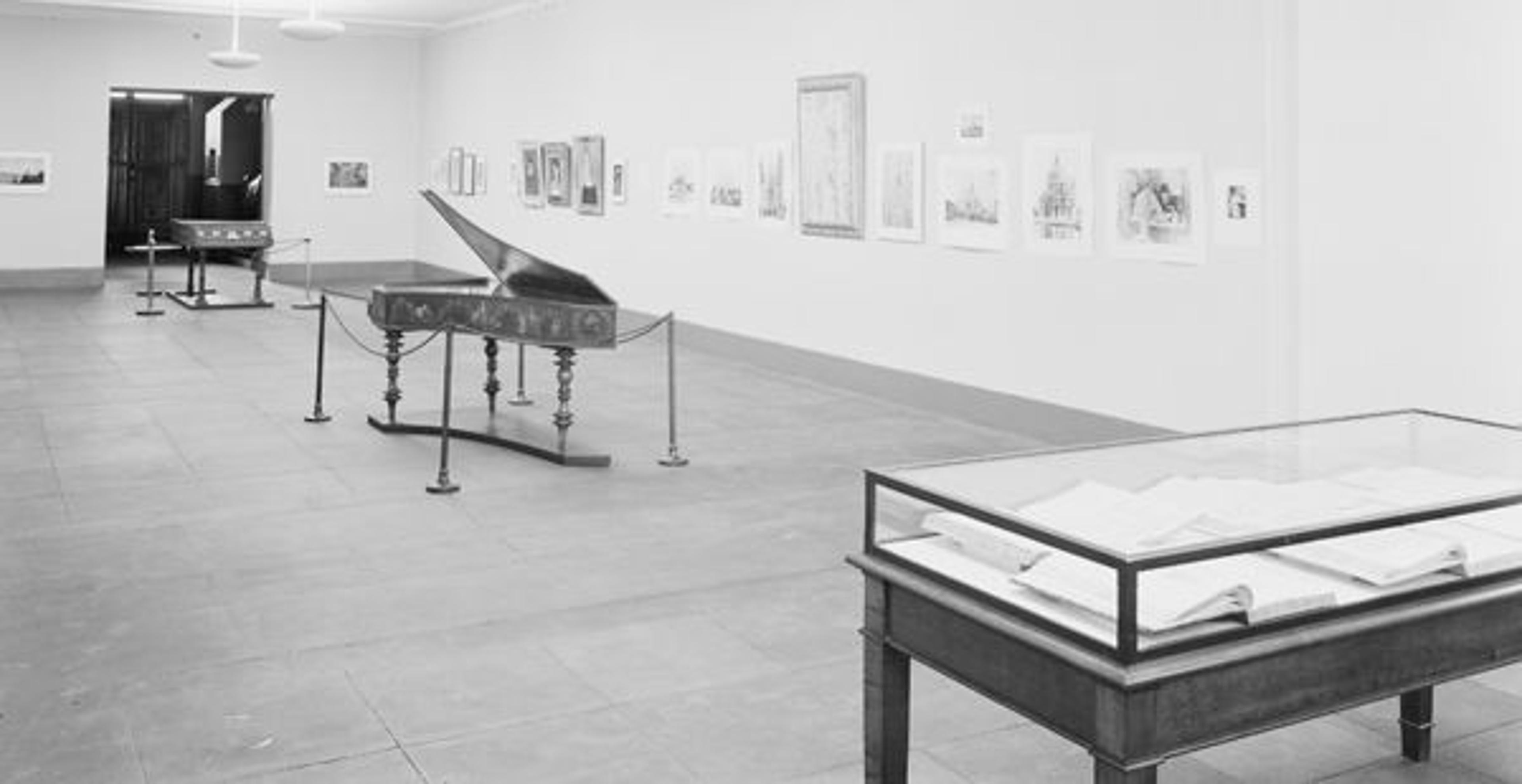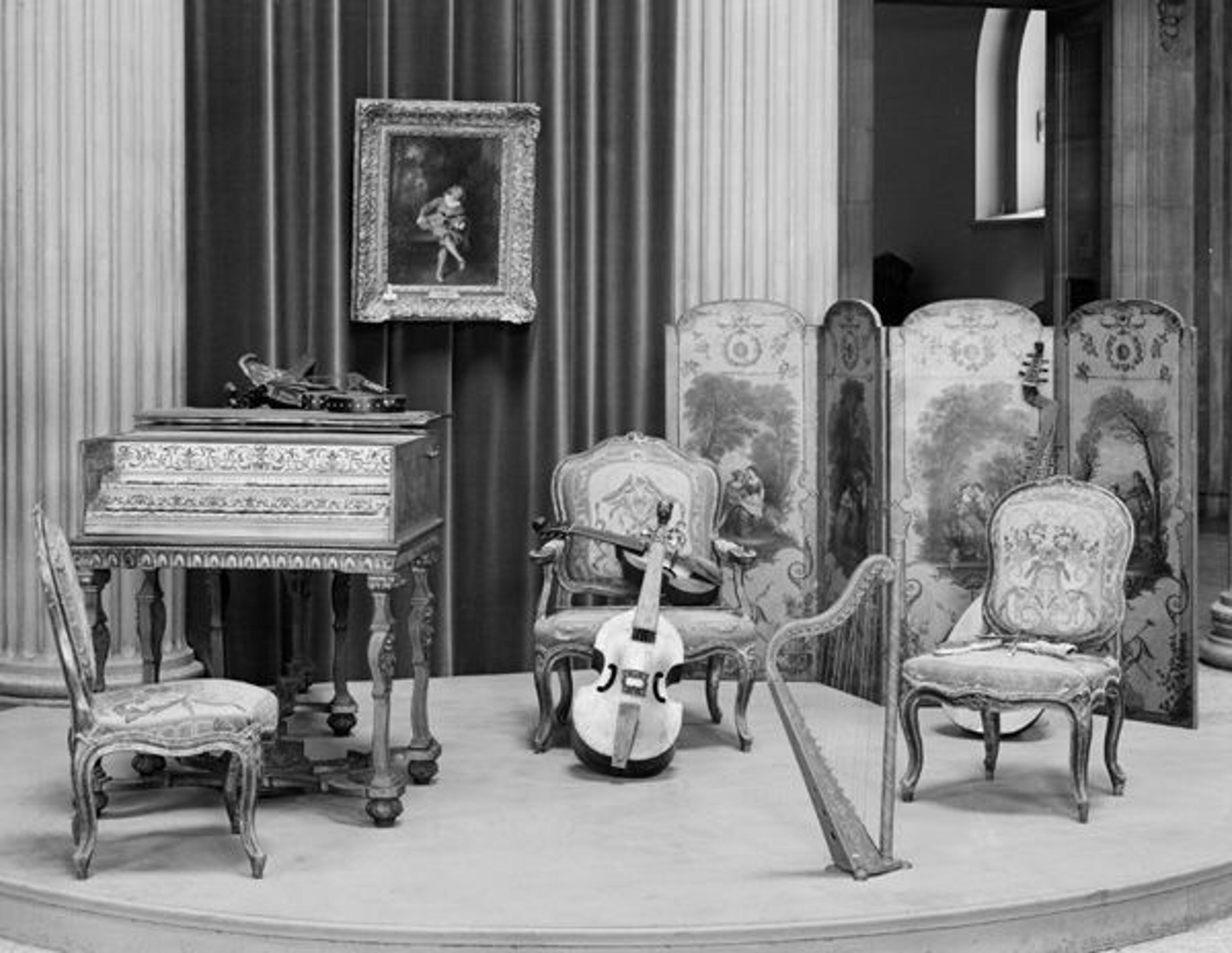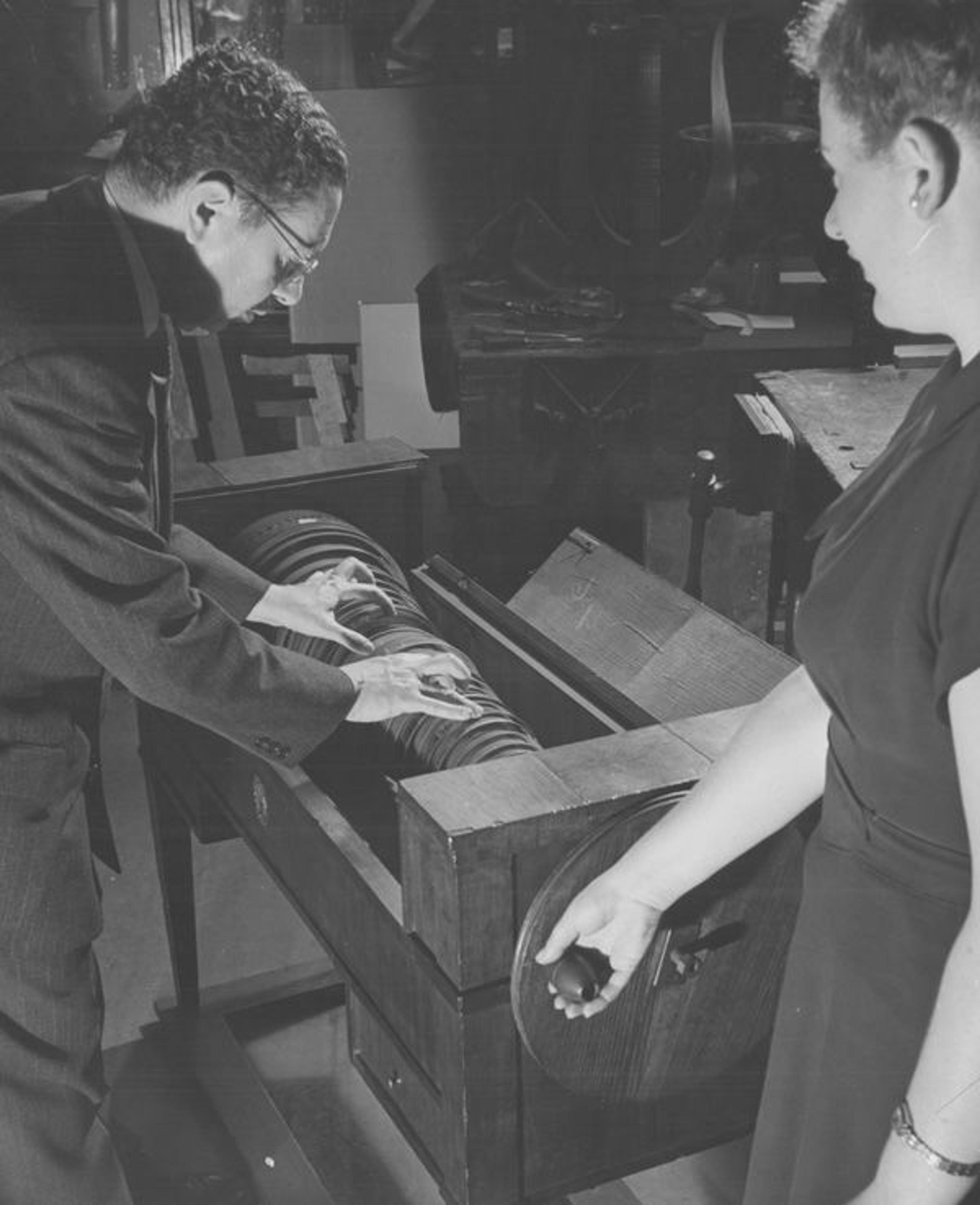«In 1949 the Department of Musical Instruments and Concerts (as it was initially known) became the Museum's thirteenth curatorial department. The person responsible for this event, Dr. Emanuel Winternitz, was named curator. Winternitz was hired in 1941 and in the nick of time, as the Museum was then deeply invested in a plan to deaccession all but four of the more than four thousand instruments in its collection.»

Left: Winternitz in the long-closed instrument galleries in the early 1940s, playing a glass harmonica. Departmental Assistant Sofula Novikova is seen turning the cylinder.
When Winternitz arrived, no musical instruments had been displayed for a decade. Not since the retirement of Frances Morris, in 1929, had any Met curator been knowledgeable about them, and in that time the instruments had suffered damage from insects, heat, and fluctuations in humidity. The Museum hired the eminent musicologist Curt Sachs in the late 1930s to repair a handful of instruments, but only to facilitate deaccessioning. Francis Taylor, named director of the Museum in 1940, initially accepted the deaccession plan before hiring Winternitz, who quickly made the collection such an integral part of the Museum that deaccessioning it became unthinkable.

Winternitz showed his musical interests early. Above, a pastel of a violin, made when he was sixteen years old.
A lawyer by trade but a passionate musician and art lover by avocation, Winternitz, born in 1898, was able to emigrate from his native Austria after it was annexed by Nazi Germany in March 1938. He initially supported himself by lecturing on music and art, and Francis Taylor was in the audience at one of his 1939 talks. Taylor promptly invited Winternitz to give a lecture course at the Met on the ambitious topic "The Essence and History of Visual and Musical Forms."
Though Winternitz's appointment was supposed to be limited to teaching eight one-hour classes, it was inevitable that he focused on the Museum's neglected collection of musical instruments. He used some of the objects to illustrate his course, and a questionnaire he distributed at the last session asked whether the respondents would like to see chamber music concerts, more lecture-demonstrations on "ancient instruments," or small exhibitions of the instruments. The answer was yes to all, and within a few weeks Taylor offered Winternitz a full-time position with the elastic title of Associate in Music. Simultaneously, Taylor directed that the reporting line for Winternitz and the musical instruments collection would be to him, rather than through the curator of the Department of Decorative Arts, who had been responsible for the musical instruments since 1907.

Exhibition mounted by Winternitz in the Museum's Basement Lecture Hall Gallery, Wing E, to illustrate his first Museum lectures, "Images and Imagination," April 1941. The exhibit already had the hallmarks of Winternitz's trademark style of combining music, art and architecture, and literary references.
With a title that encompassed every music-related aspect of the Museum, the support of the Museum director, and no administrative hierarchy to interfere with his plans, Winternitz went into action immediately. He transformed the Museum, which had been criticized widely in the press for "hiding" the finest instrument collection in the Western hemisphere, into an institution at the forefront of scholarship and performances for musical instruments.
How did a former lawyer, whose professional musical experience only consisted of a youthful stint playing the organ during silent movies, accomplish this? In part, Winternitz was educated when breadth of knowledge across many fields was taken for granted in the scholarly world. (Indeed, Winternitz always argued against the tendency towards silos of specialized knowledge, and in favor of humanism that spanned the arts and letters.) Winternitz also had both a lifelong talent for delving into new topics and a large circle of scholarly acquaintances.
Before and after the war, he visited museums, libraries, and scholars, and photographed the art and architecture of Europe. In Vienna he was an integral part of the musical and artistic intelligentsia, many of whose members were Jewish and, like Winternitz, had immigrated to the United States. For more than forty years, the Museum and Winternitz both benefitted: the former from Winternitz's ability to call upon his connections for lectures, concerts, and consultations; the latter because his association with a preeminent art museum provided him with an endless supply of material for scholarly inquiry and made the department he founded a leader in exhibition and performance.

A small display arranged in the Great Hall by Winternitz in November 1941, shortly after he arrived at the Met.
Once in a permanent position at the Met, Winternitz used his talents and connections to make "Musical Activities" (a term used at the Museum during the 1940s to refer to Winternitz's department) one of the Met's most active specialties. He mounted special exhibits of musical instruments immediately and, in 1943, reopened permanent galleries for the long-shuttered instruments. To prepare the instruments for display, he restored several to playing condition. Unlike previous curators responsible for these objects, Winternitz believed that some instruments in museums could—and should—be played.
In this regard Winternitz was very much of his time. Indeed, his attitude made it more palatable to many serious musicians that fine instruments should find permanent homes in museums, rather than being passed from performer to performer. Winternitz's commitment to playability was limited, however. Recognizing that generations of performance takes a toll on any instrument, he argued strongly in favor of accepting a Stradivarius violin so that an example of the art of the world's greatest luthier would survive, long after those in private hands had deteriorated.
Related Link
Read more about Emanuel Winternitz in the multimedia feature A Harmonious Ensemble: Musical Instruments at the Metropolitan Museum, 1884–2014, a comprehensive account of the history of the Department of Musical Instruments written by Rebecca Lindsey.
